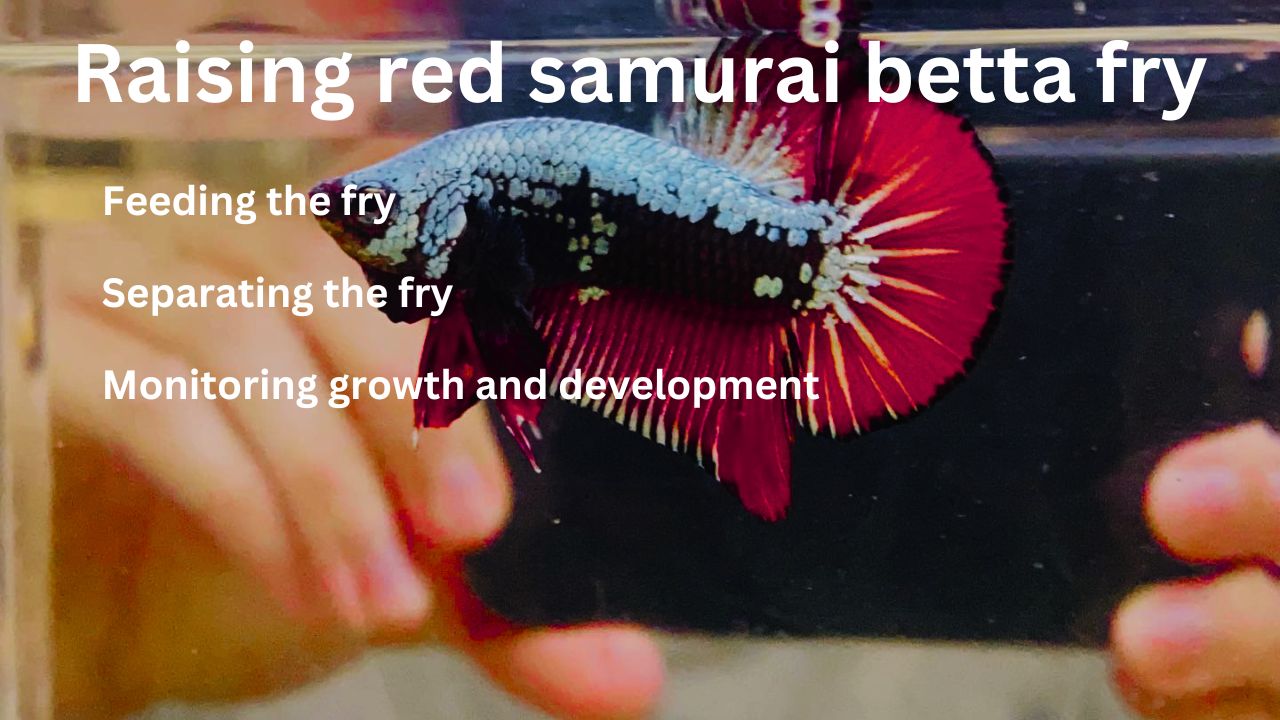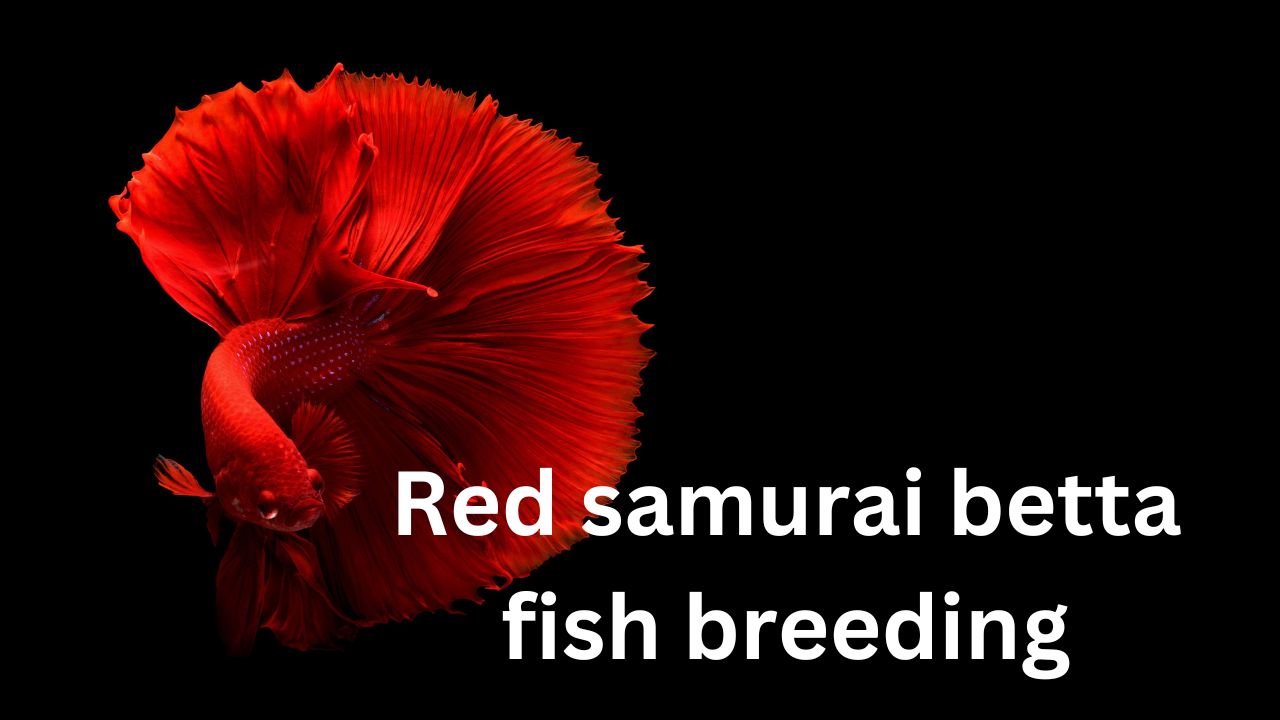Red samurai betta fish breeding
Introduction to Red Samurai Betta fish
Hi, I am Carry, Today we are Discussing Red Samurai betta fish breeding, food, and other important points. So let’s Start.
The red samurai betta, also known as the red dragon betta, is a vibrantly colored variety of Betta splendens, the Siamese fighting fish. They are named for their resemblance to the armor worn by samurai warriors in feudal Japan.
Origins and physical traits
Red samurai bettas originated in Thailand, where betta breeders have selectively bred these fish for their bright red coloration accented by black scaling along the body. These bettas have lengthy fins and a bold, aggressive temperament fitting their name.
Behavior and temperament
Red samurai bettas are known to be especially aggressive, even compared to other betta varieties. Their feisty nature makes them better suited to living alone in most cases. Despite their pugnacious attitudes, these fish make striking additions to tanks when properly cared for. Providing adequate space is key to avoiding conflict between tankmates.
Ideal tank conditions
Given their origins in the water-filled rice paddies of Southeast Asia, red samurais thrive in warm, slow-moving water. Tank temperatures between 75-82°F suit them best. Places to hide and build bubble nests give them the comfort and sense of territorial ownership they instinctively seek out.
Selecting a breeding pair
When selecting a red samurai pair for breeding, choose fish displaying vivid coloration and flowing fins, signs of health, and strong genetics. The male and female should both appear active and alert when flaring at their reflections.
Pay special attention to the female’s body shape. She should have a rounded belly filled with eggs. Avoid females that look skinny or underfed, as this can signal infertility.
Choose a younger pair, under a year old. Younger bettas tend to be more successful at spawning and producing more numerous and viable eggs.
Setting up the breeding tank
Red samurai bettas require specialized tank conditions to stimulate breeding behavior. Use a 10-20 gallon tank filled with 8-10 inches of water. The male will build a bubble nest near the surface, so it must be shallow enough for him to reach.
The water should be soft with a pH between 6.0 and 6.5. Add aquarium salt at 1 teaspoon per gallon and plants like java moss for the male to anchor his bubble nest. Keep the temperature at 80°F.
Use a tight-fitting tank lid. Unlike most bettas, red samurais are prone to jumping out when agitated. Dim lighting also helps soothe their high-strung temperament.
Spawning process
To start the spawning process, introduce the conditioned pair into the breeding tank, separating them at first with a clear divider. This allows them to flare and entice one another without making physical contact.
After 2-3 days, the male should have an established bubble nest. Remove the divider. The male will likely chase and nip at the female as part of their mating ritual. She may require multiple attempts over several hours before allowing him to wrap his body around hers.
During embrace, she releases 10-40 eggs which he quickly fertilizes. The mating triggers the female to drop more eggs, up to 100 in a single session! The diligent male gathers each fallen egg in his mouth and deposits them in the bubble nest.
Caring for eggs and fry
The incubation period inside the bubble nest generally lasts 24-36 hours before red samurai eggs hatch. For the next 2-4 days, the fry rely entirely on their yolk sacs for nourishment. During this time, remove the female to prevent her from eating the vulnerable babies.
In 4-6 more days, the fry becomes free-swimming. Now you must feed them infusoria multiple times daily. Siphon the tank bottom daily as well, removing unfertilized eggs and other debris to maintain water quality.
Raising red samurai betta fry

Feeding the fry
Newly free-swimming fry need microscopic foods like infusoria and green water to support their tiny digestive systems. After around 14 days, supplement their diet with crushed pellets and live foods. Live foods like microworms and baby brine shrimp help red samurai fry grow faster and stronger.
Monitoring growth and development
Monitor water parameters daily to ensure optimal health, testing for ammonia, nitrites, nitrates, and pH. The fry proliferated, practically doubling in size within their first month. You’ll also start to see coloration emerge around 6-8 weeks.
As juvenile fish mature into adults, males can be identified by broader ventrals, sharper body angles, and brighter colors. Females look plain by comparison. By 12 weeks, the junior fish resemble small versions of mature bettas.
Separating the fry
Males must be removed from the spawn tank starting at weeks 10-12 as aggressiveness escalates with sexual maturity. Keep females together until you can identify potential breeders, who should also get their tanks. Cull any notably small or deformed fry.
The rest can be sold online or at your local fish store! Finding good homes for these feisty fish ensures your efforts in breeding them don’t go to waste.
Common issues in breeding red samurais
Diseases
Fry are vulnerable to diseases like velvet, ich, fungus, and fin rot. Maintain excellent water quality and avoid overcrowding to reduce outbreak risks. Quickly isolate and treat any infected fish.
Aggression between fish
Red samurais are naturally belligerent, even toward each other. The male may kill the female post-spawning, hence why she must be removed promptly. Similarly, mature males will attack each other, requiring their early separation.
Infertile eggs
Infertile spawnings do occur. Remove any fungus eggs from the tank to prevent disease spread. Figure out why eggs didn’t fertilize—old age, poor conditioning, inadequate tank setup—and address causes before the next attempt.
Fry death
High fry mortality is an unfortunate reality, especially for first-time breeders. Review husbandry protocols to fix any oversights. Cull weaklings exhibiting stunted growth or abnormalities early on. Genetic issues can arise when closely related fish are bred.
Conclusion
Breeding red samurai bettas offers a fun challenge to advanced aquarists. From selecting a compatible pair to raising the demanding fry, success requires research and dedication. But the brilliant fruits of your labor make it a truly rewarding endeavor for any betta lover!
FAQs
Are red betta fish more aggressive?
Yes, the red color morphs like samurais and dragons tend to be more aggressive than other betta types due to selective breeding. Their pugnacious attitudes once made them prized Siamese fighting fish.
How long do red samurai betta fish live?
With proper care, red samurai bettas live 3-5 years on average. Their lifespan is comparable to other Betta splendens color variations.
What are the different types of red samurai betta fish?
There are three main types of red samurai bettas. The red dragon has whitish scales speckling its bright body. The extended red features more red scaling on its fins and head compared to traditional red samurais. The Super Red strain has been bred to remove all iridescence, resulting in intense, non-shimmering red coloration.

1 thought on “Red samurai betta fish breeding in 2024”